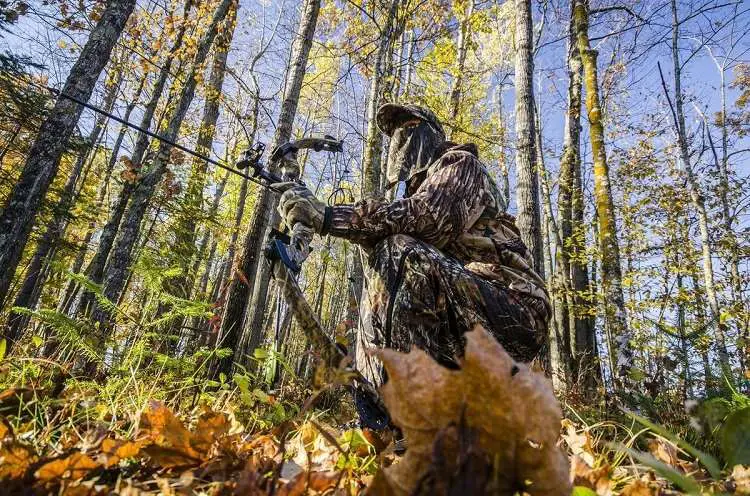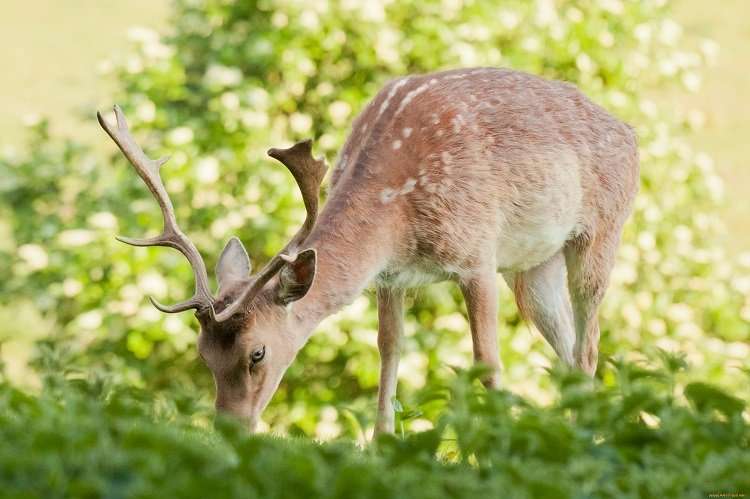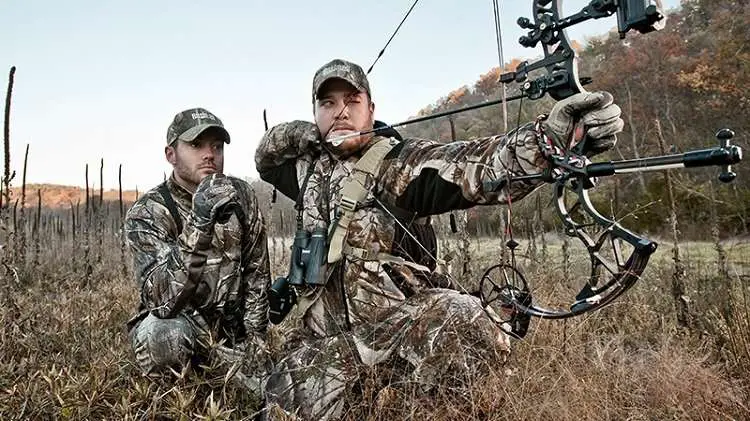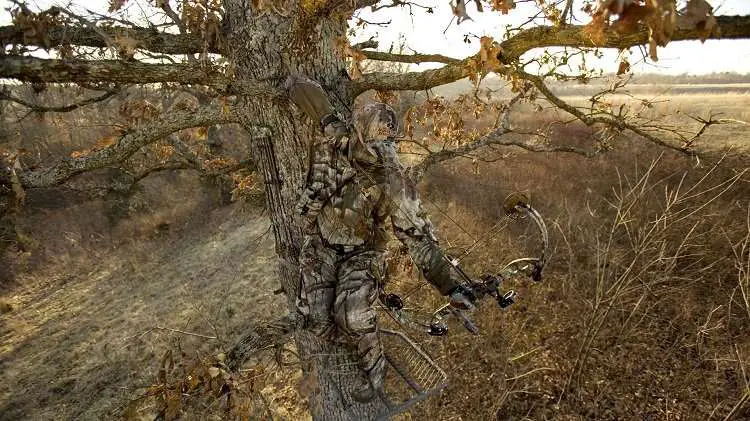Bowhunting deer is a more intimate experience with the shorter ranges involved.
It also demands more of you in terms of patience, perseverance, and skill.
Unlike hunting with a gun, success with the bow depends on your ability to take advantage of an opportunity to close the distance and take a well-placed shot.
Bowhunting varies significantly depending on when in the season you want to harvest your deer. Additionally, bowhunting is just like everything else in life, and what you put in is what you get out.
With that in mind, there are a few bow hunting tips that you could benefit from across the three periods of deer hunting season.
#1 No pressure

It is absolutely imperative that you do not spook the deer during the hunting season as much as the need to get up close and personal is required.
Ultimately if you spook them, this will cause them to run. So try to practice low-pressure hunting techniques as much as possible.
Rely more on game cameras or hunting binoculars to get information about your prey’s movements and use naturally stented gear. If you have to watch your expenses, the best binoculars under $100 are as reliable.
#2 Plan in advance
You should be less on the property, the closer it gets to opening day. So try to set yourself up so that you have a solid hunting strategy at least a week or two ahead of opening day. Your strategy should be planned well in advance than other hunters so you can enjoy a stellar season.
Planning in advance also involves getting enough practice. If you’ll be using crossbows, enhance your skills with the best crossbow targets.
#3 Target bedding to feeding routes

The deer’s number one priority before hunting season is to enjoy the feast of nuts, acorns, and fruit so that they can bulk up as the lean season approaches.
So naturally, they look for food with high sugar content such as fruits, nuts, and acorns. So try to find out where the deer’s food sources are abundant.
You can set up cameras in that area to identify where they might head for bedding if they are feeding in that specific area.
So with the routes identified and target deer patterned, you know where to position yourself for maximum effectiveness best as hunting season opens.
#4 Stalk the does
The highlight of the hunting rut may be killing a buck, however, the actual stars of the season are the does.
Basically, any way you find does a buck is almost guaranteed to be close by. However, hunting does is no walk in the park.
This is because they are especially wary since they have to contend with both bucks and hunters. So you need a good knowledge of the land, a good instinct of where they may be, and the best binoculars under $200.
#5 Use your ears

With fights, chasings, wheezes, as well as buck grunts, soaring through the air, hunting season is quite a noisy time.
There is so much information coming in from all around, so you need to hone in on cues that can help you locate a buck searching for females or competing against territorial rivals.
Use the sound to help you paint a picture of the environment. Ultimately the most use your knowledge as well to decide how you want to approach the buck.
If you’re not the stalking type, try to arrive as early as possible in the morning and use that time to listen for calls.
#6 Hunt the food
During the winter, food sources become scarce in the wild. This especially since the fields of grass wither in the cold and disappear under a blanket of snow.
With freezing temperatures combined with less food, deer are less likely to wander out of their safe zone with a lot of food and enough cover to conceal a bedding area.
This makes it easier to pattern the deers’ activities, and with snow on the ground, paths are also more visible. So hunt for rich sources of wintering food.
Also, try to find a bed to food path and start your patterning to set up an ambush.
Make sure you’re wearing the best rubber hunting boots so you can conquer any terrain while stalking!
#7 Master the art of stealth

In the late season, deer become notoriously easy to spook. This is due to two factors.
Firstly, they are under pressure from the hunting season, and secondly, they stick to a more regular pattern making it easier for them to spot things that might be out of the ordinary.
In order to work on this, you need to be especially careful during late-season hunts. In times like these, trail cameras come in especially handy.
So try to put them up strategically so you can use information from previous sightings to plan your journey into the deer’s core area.
With the shorter range of a bow, you may need to target the deer closer to its bedding or feeding areas.
If you’re planning to hunt predators, learn how to tell a wolf from a coyote first plus tips on how to coyote-proof you yard!
To keep concealed, use naturally scented or scent-free clothing, deploy a ground blind to allow you to get as close as possible to the deer, and plan your camouflage well.
Ready to catch some deer? Learn all about them from these informative guides:
Want to up your hunting game? Our article on the best light for coyote hunting at night and the best headlights for hunting are great places to start! Plus complete your hunting gear outfit with the best elk hunting boots!
Interested in raccoons? Learn how many babies can a raccoon have and what the best raccoon hunting lights are!
Planning to camp out and hunt at dawn? Make sure you have the best wall tent stoves!
Interested in eagles? Learn when a bald eagle’s head turns white from our latest article!
